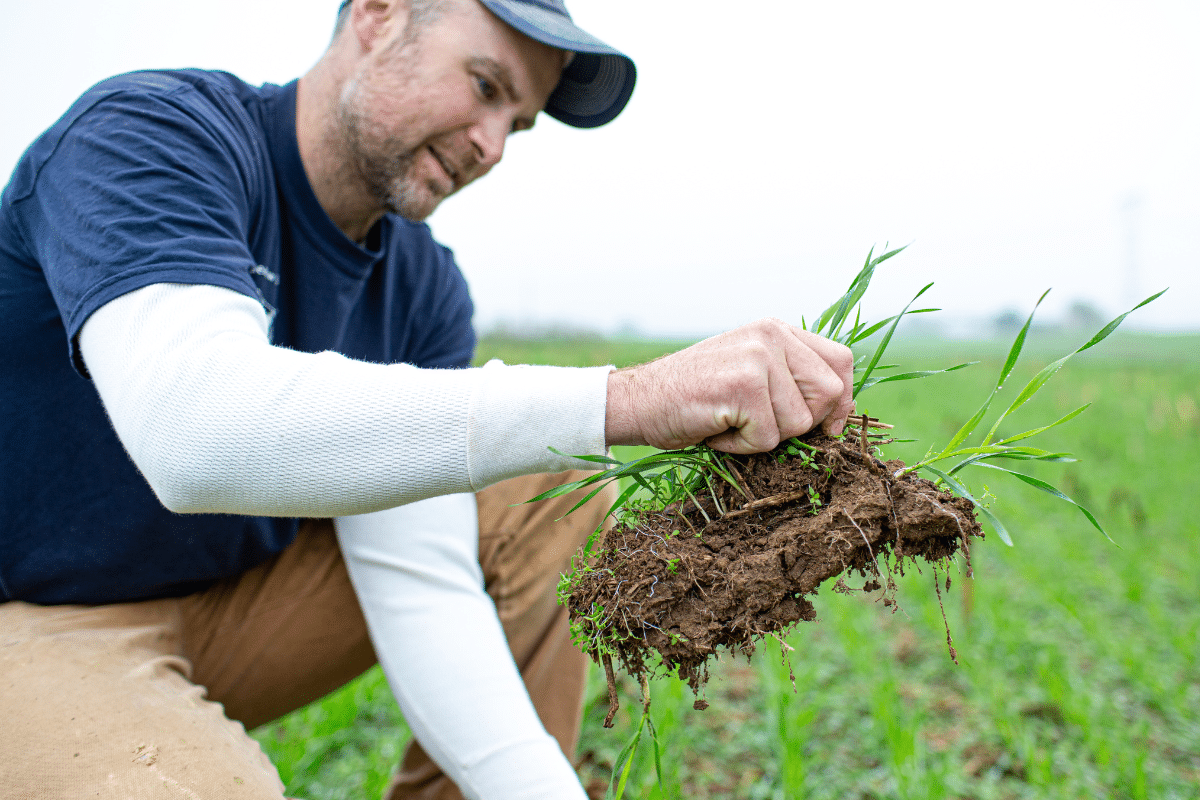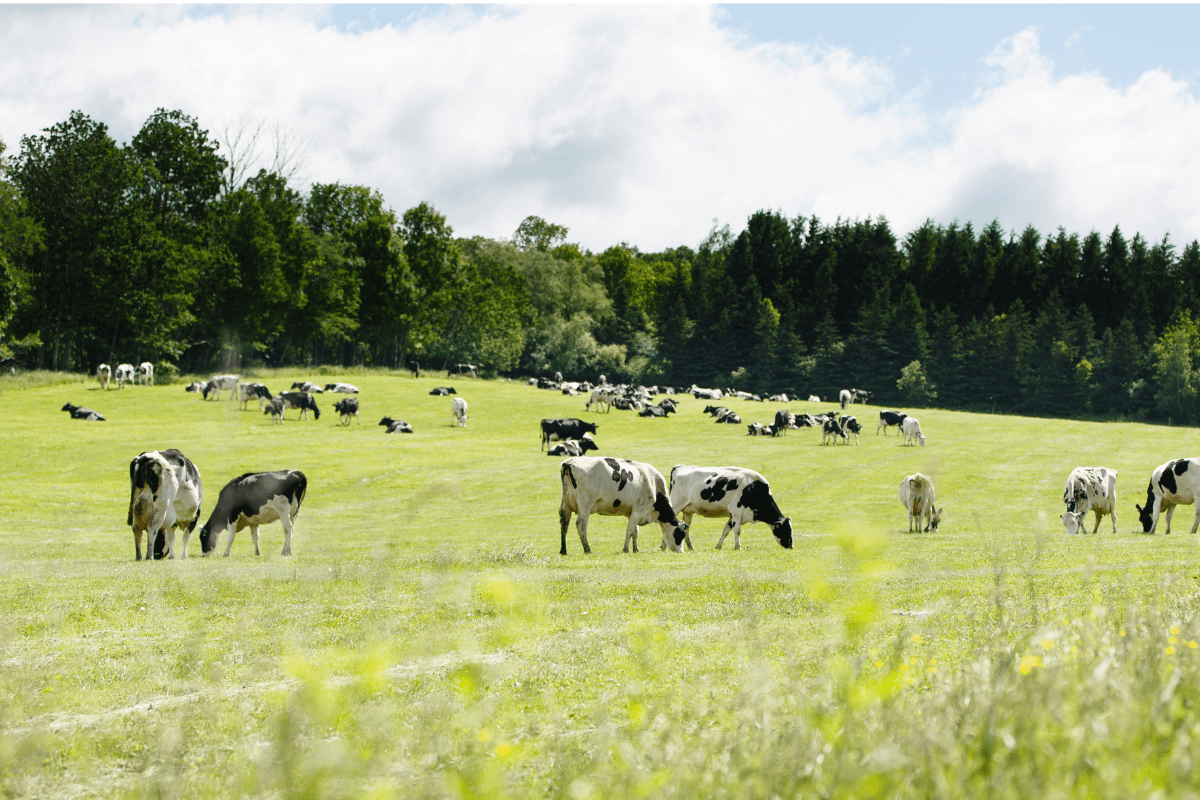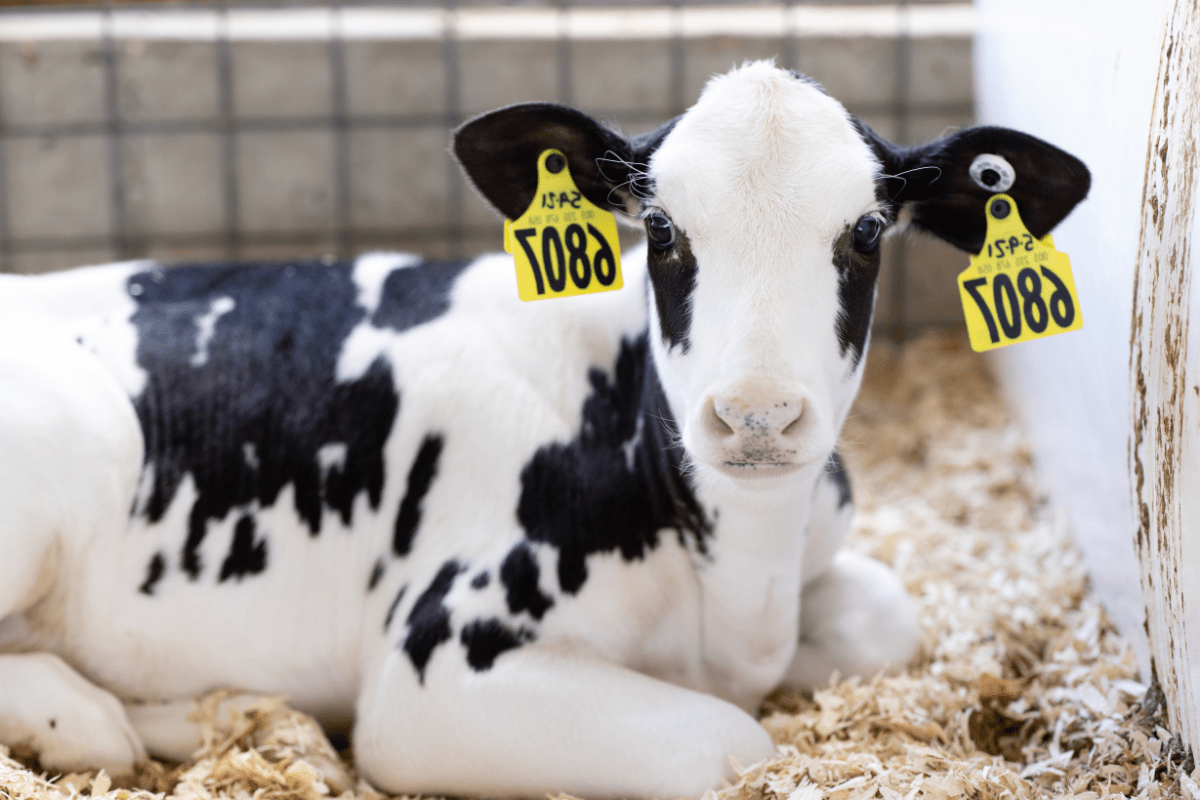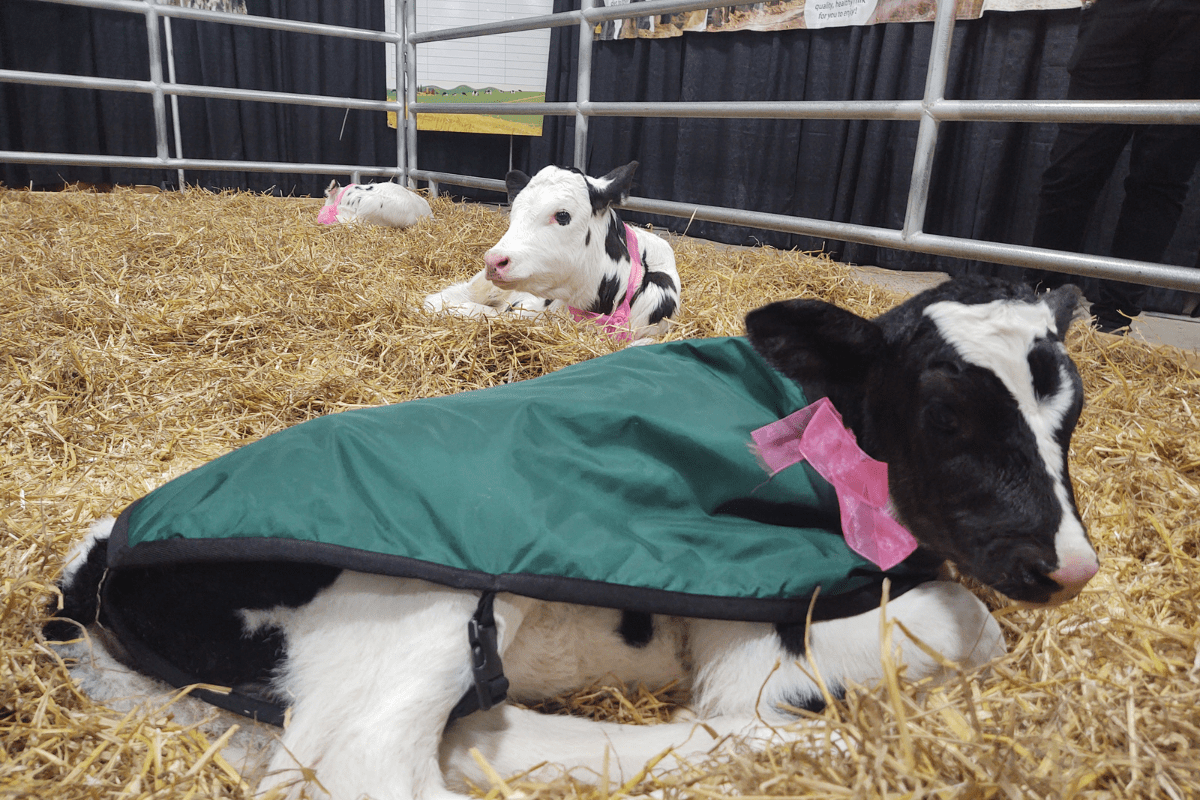Dairy farming is a labor of love that requires passion and commitment seven days a week, 365 days a year. Even on holidays, like Thanksgiving.
Ask our nearly 9,000 dairy farm families and they will tell you: Thanksgiving is more than a holiday, it’s another Thursday on the farm. The cows need milking and feeding regardless of the day. Farm duties don’t go on pause regardless of the day.
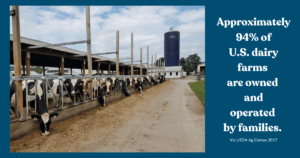
1. Farming, a Family Affair.
The dairy farming community gives thanks for having more time with family. According to the USDA, 94.2% of U.S. dairy farms are family owned and operated, often by multiple generations of the family. Each family member often contributes to the farm’s success.
Members of the Porter family show us how a great of love of cows fostered a daughter’s career as a dairy farmer.
The Porters farm together on the family dairy in New York. The farm was started in 1938 by Greg’s grandfather. Now, this dad and daughter duo work side by side every day. Greg shares his expertise with Casey, taking care of the herd together.
You can ‘meet’ more of our local farm families in other episodes of “This American Dairy Farmer.”
2. Cows… and Milk!
Dairy farmers LOVE their cows. Thankful for their animals, farmers care for their cows around the clock. Keeping cows comfortable and content is top priority. After all, well-cared for cows produce more milk.
At dairy farms, like Spring Hope Dairy in Clifton Springs, New York, cows can get a massage any time they want. When the animals are tired, there’s soft sand bedding for them to lie on.
During the summer, fans and misters keep cows cool… the way they like it.
In the winter, calf jackets keep calves warm and barns provide shelter for cows from the heat, cold and snow.
3. Land, Air and Water.
Thankful to be on the land where they live and work, dairy farmers conserve resources such as water, land, and energy.
Sustainability has come a long way on dairy farms. In fact, the U.S. dairy industry is responsible for for less than 2 percent of total U.S. greenhouse gas emissions. There’s always more to do and dairy farmers continue to go greener by reducing greenhouse gases, optimizing water use, and increasing soil health.
Over a recent 10-year period, dairy farming used about 30.5% less water, 21% less land, 20% less fuel, and 17% less feed. Their work continues as the dairy industry has committed to achieving greenhouse gas neutrality by 2050.
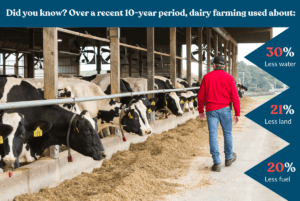
4. Wholesome Milk.
Farmers are thankful to produce milk that’s nutritious and delicious, for their family… and yours. You can feel good about the 13 essential nutrients milk provides – as well as the care the farmer puts into the cows and planet.
In only 48 hours, milk is delivered to from the dairy farm to the grocery store.
Browse our recipes for inspiration to get your 3 daily servings of dairy.
5. Giving Thanks by Giving Back.
When you have so much to be thankful for, you want to share with others. Dairy farmers support childhood wellness programs, like Breakfast After the Bell. They also help bring fresh milk to families through milk donation drives, like Fill a Glass with Hope®
“I’m proud to represent my fellow dairy farmers to highlight the importance of Fill a Glass with Hope,” said Brett Reinford. “This campaign showcases our dedication for producing wholesome, nutritious milk, and also for ensuring it is accessible to all families in our communities.”
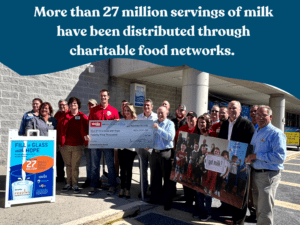
Brett Reinford of Reinford Farms in Mifflintown, Pennsylvania, attends a Hunger Action Day press conference where Weiss Markets gave their collected $125,000 in donations to Fill a Glass with Hope®.
Sitting down for the Thanksgiving Day feast, there’s plenty reason for gratitude. Whether you’re a dairy farmer or dairy lover, being able to spend the day with friends and family (and sharing a good meal!), well, it just doesn’t get better than that.

